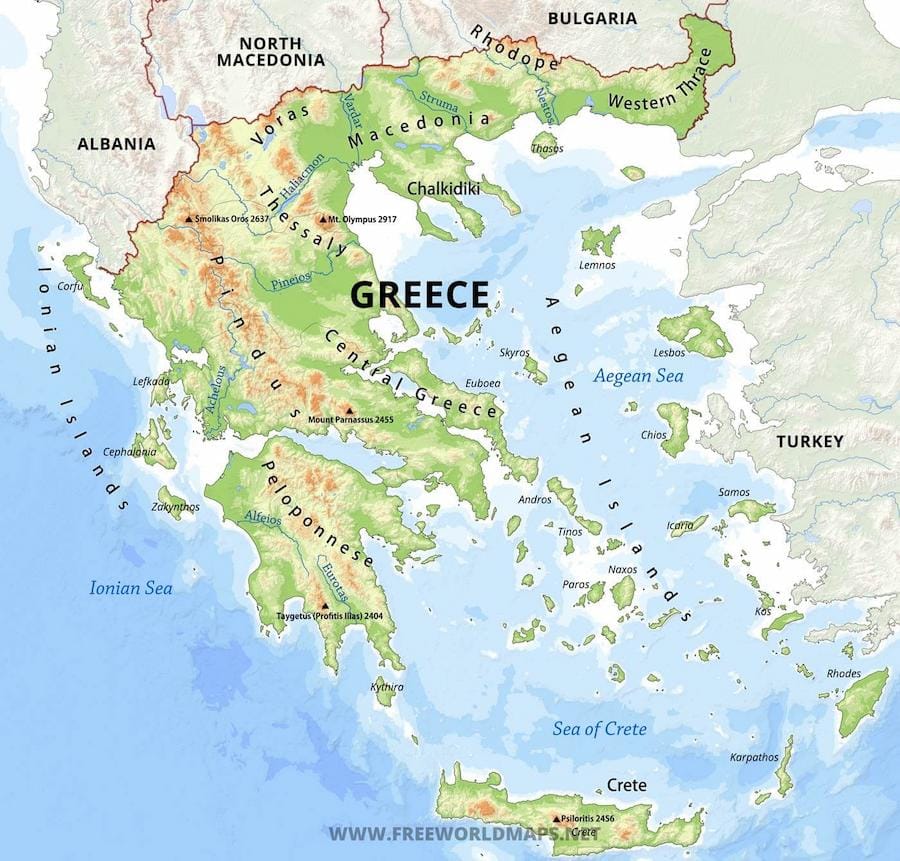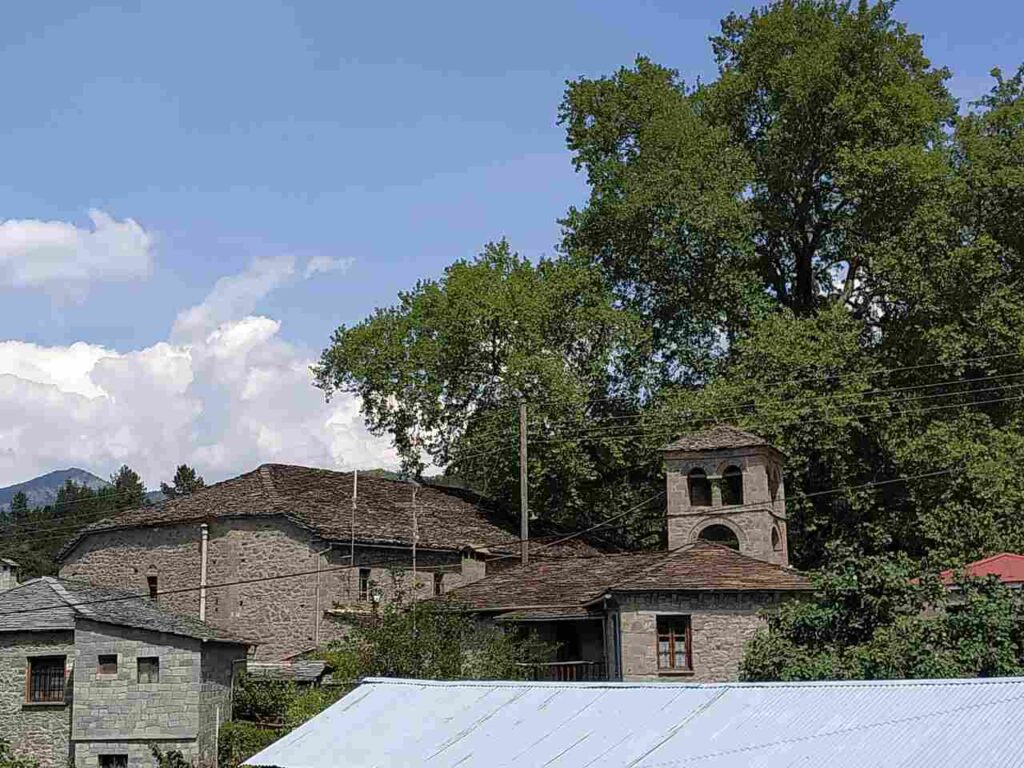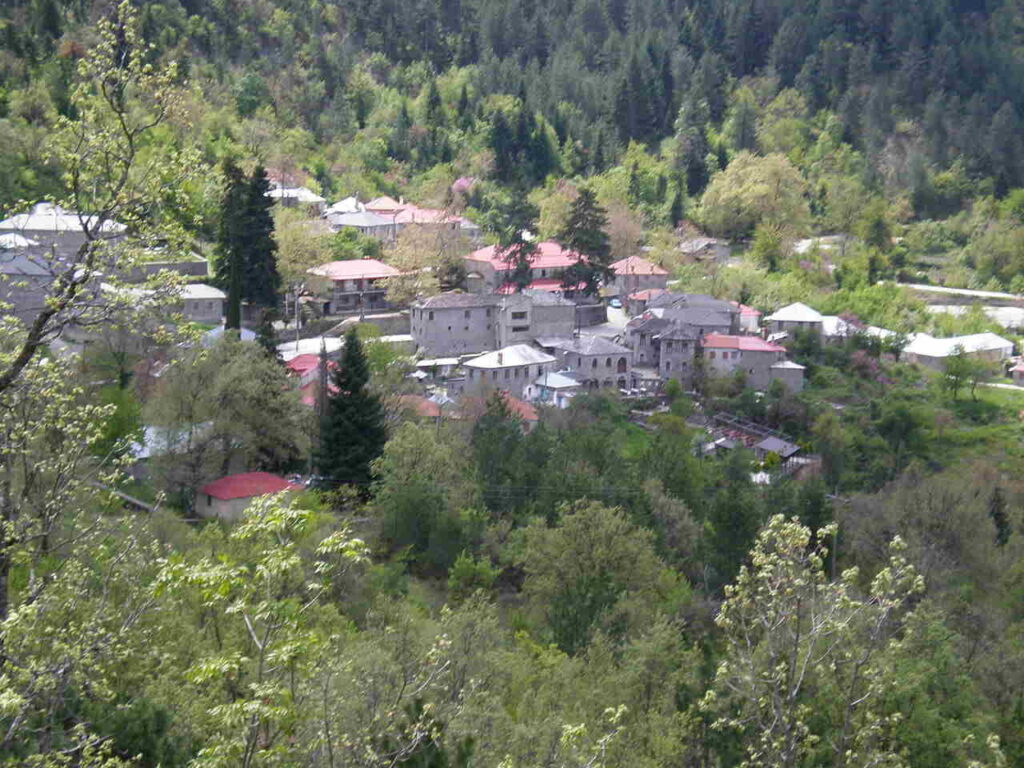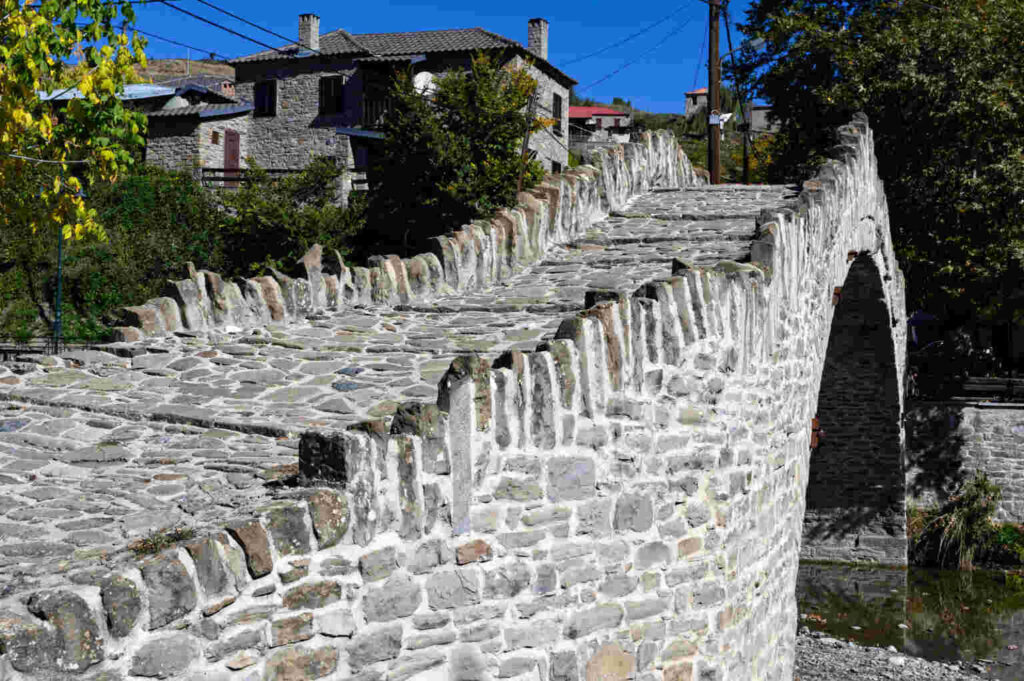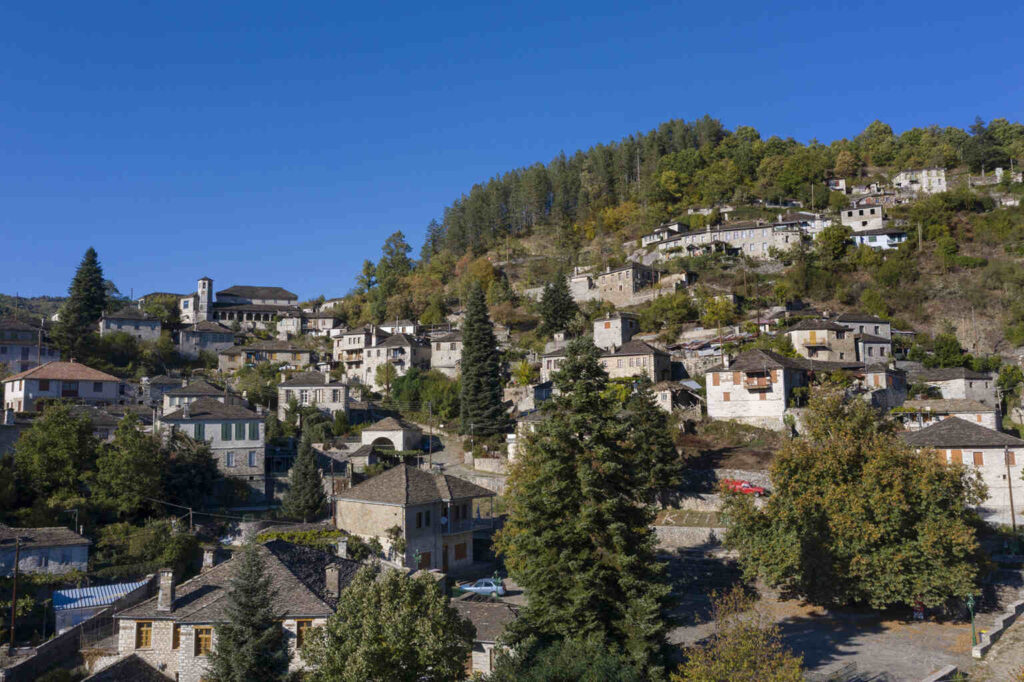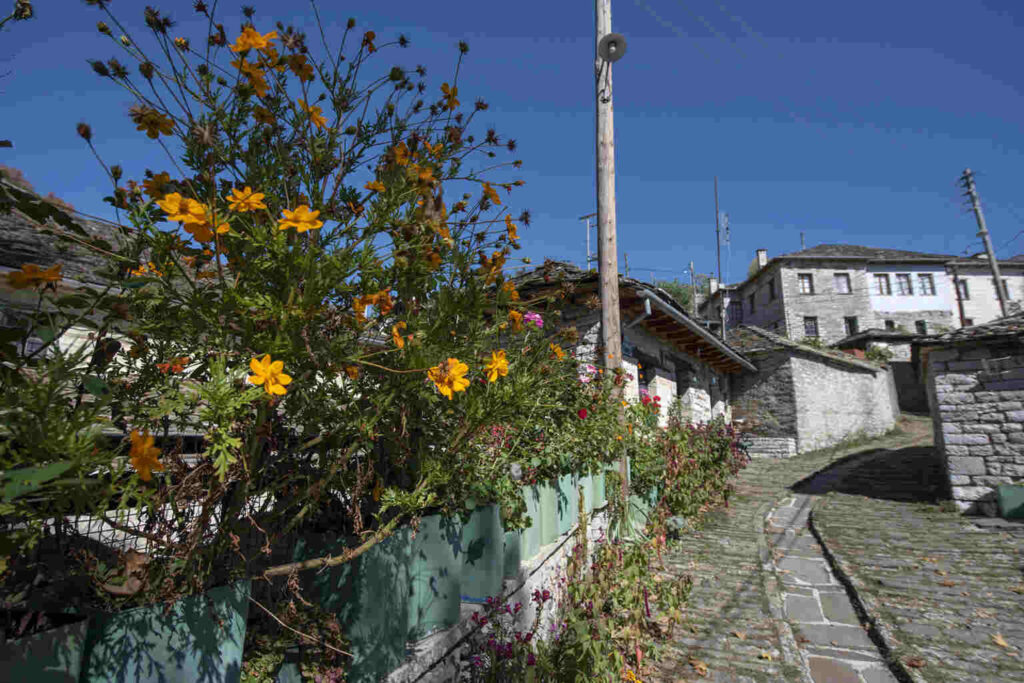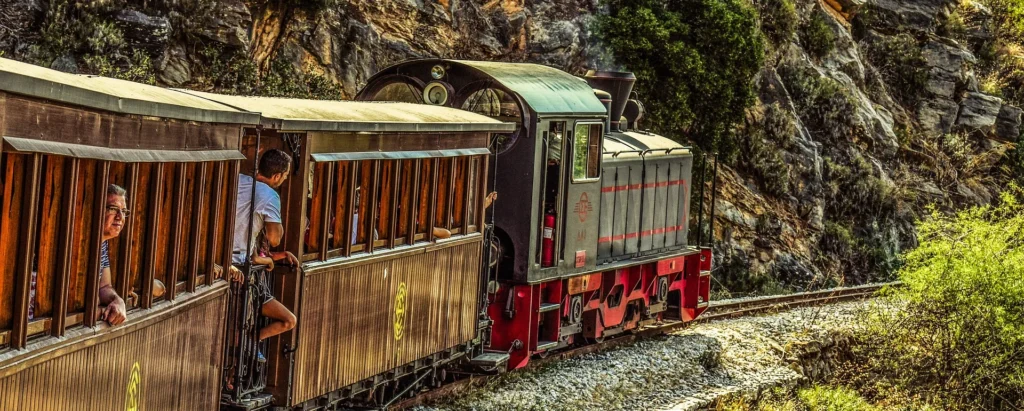The Pindus mountain range is Greece’s gem, including some of its most beautiful and highest mountains and most picturesque villages. The Pindus mountain range, often referred to as the “spine of Greece,” is a prominent mountain system in southeastern Europe that extends across much of mainland Greece and into southern Albania. It forms part of the larger Alpine-Himalayan orogenic belt and is known for its rugged terrain, deep gorges, and diverse ecosystems. The Pindus mountain range is a popular destination for hikers and nature enthusiasts.
It runs roughly from northwest to southeast, starting near the Albanian border and stretching into central Greece. It separates the western regions of Epirus from Thessaly and Central Greece to the east. Its highest peak is Mount Smolikas, standing at 2,637 meters (8,652 feet), the second highest in Greece after Mount Olympus.
Travellers flock to the Pindus mountain range to explore its breathtaking landscapes and rich biodiversity.
The unique ecosystem of the Pindus mountain range supports numerous flora and fauna not found anywhere else.
The Unique Ecosystem of the Pindus Mountain Range
Within the Pindus mountain range, many species thrive, making it a vital ecological region in Greece. Adventurers can discover picturesque hiking trails throughout the Pindus mountain range. The Pindus mountain range offers stunning views and opportunities for outdoor activities. Visitors to the Pindus mountain range can experience the charm of traditional villages.
The majestic Pindus mountain range, often called the “spine of Greece,” is a paradise for nature lovers and photographers alike. Its dramatic peaks, lush forests, and crystal-clear rivers create a landscape of unforgettable beauty that draws visitors from all over the world.
Stretching across northern Greece, the Pindus range is a mosaic of ecosystems — from dense oak, beech, and pine forests to flower-filled alpine meadows that shimmer beneath the summer sun. It’s also one of Europe’s biodiversity hotspots, providing refuge to some of the continent’s rarest wildlife, including the elusive brown bear, the graceful Balkan lynx, and the soaring golden eagle.
Many parts of the range are protected under the Natura 2000 network and include spectacular national parks such as Pindus National Park (Valia Kalda) and Vikos–Aoös National Park. Whether you’re hiking through pristine valleys, following the trails of ancient forests, or standing at the edge of Vikos Gorge — one of the deepest in the world — every turn reveals another breathtaking view.
Yet, the Pindus mountains are not just a sanctuary of nature; they are also a cradle of culture and tradition. Nestled among the slopes are centuries-old stone villages, where time seems to stand still. In places like Metsovo, Papingo, and Zagori, visitors can wander through cobbled streets, taste local delicacies, and experience the warm hospitality of mountain life. Each village tells its own story — of resilience, craftsmanship, and harmony with nature.
Despite its pristine beauty, the Pindus range faces modern challenges, including deforestation, illegal hunting, and the growing threat of climate change. Dedicated conservation efforts continue to protect this precious environment and the wildlife that calls it home.
A journey through the Pindus mountain range is more than an escape into nature — it’s an invitation to connect with Greece’s wild heart. Every visit uncovers new wonders, from awe-inspiring landscapes to the timeless spirit of its mountain communities.
Mikro Papigo
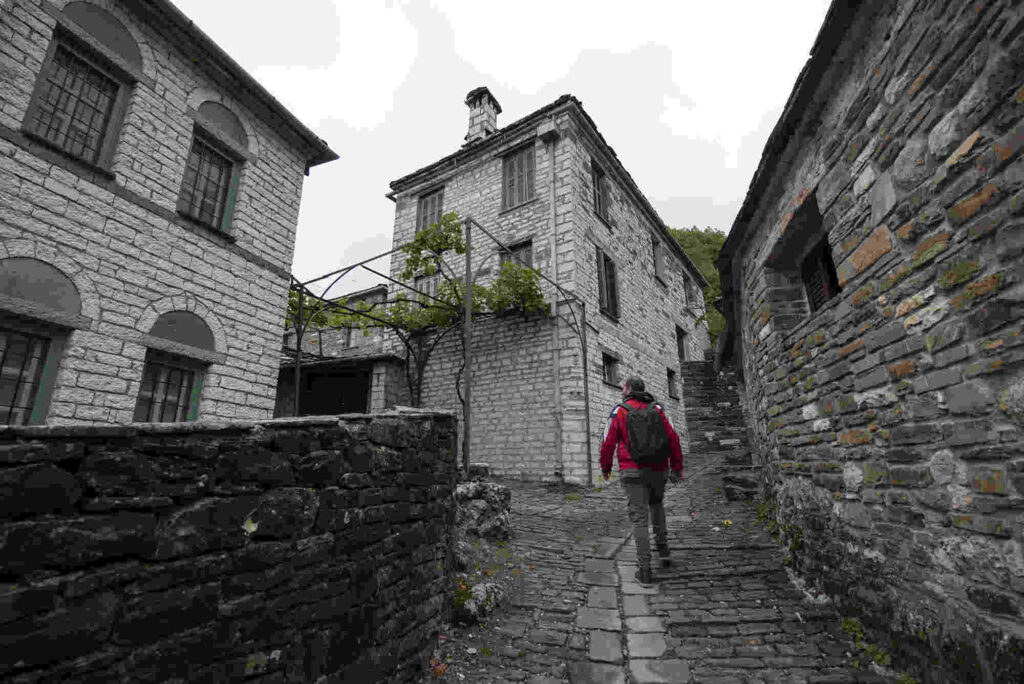
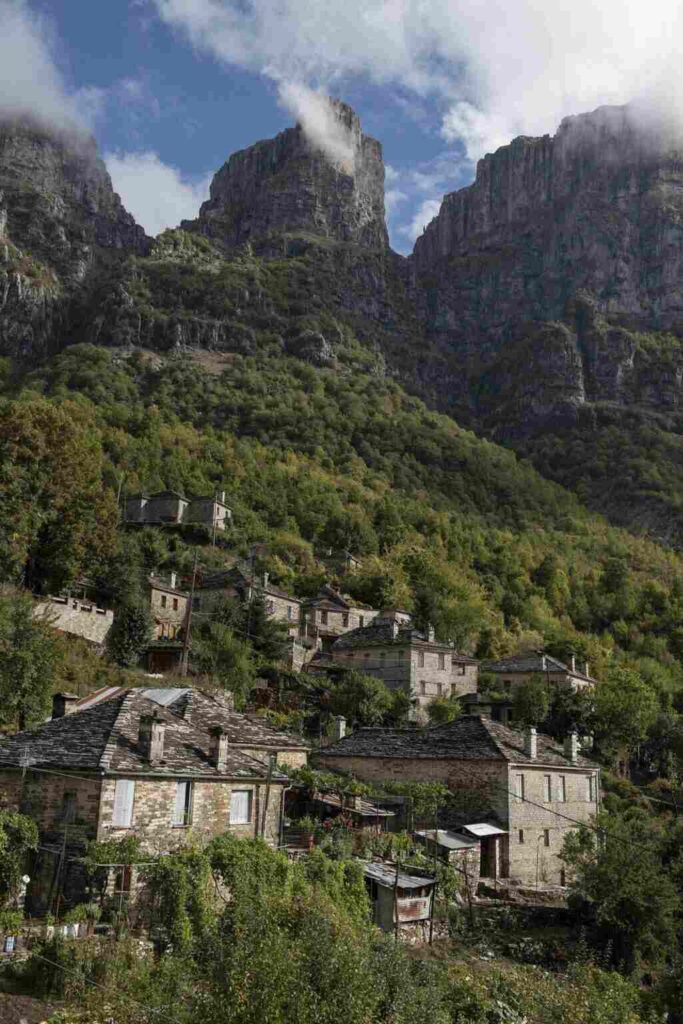
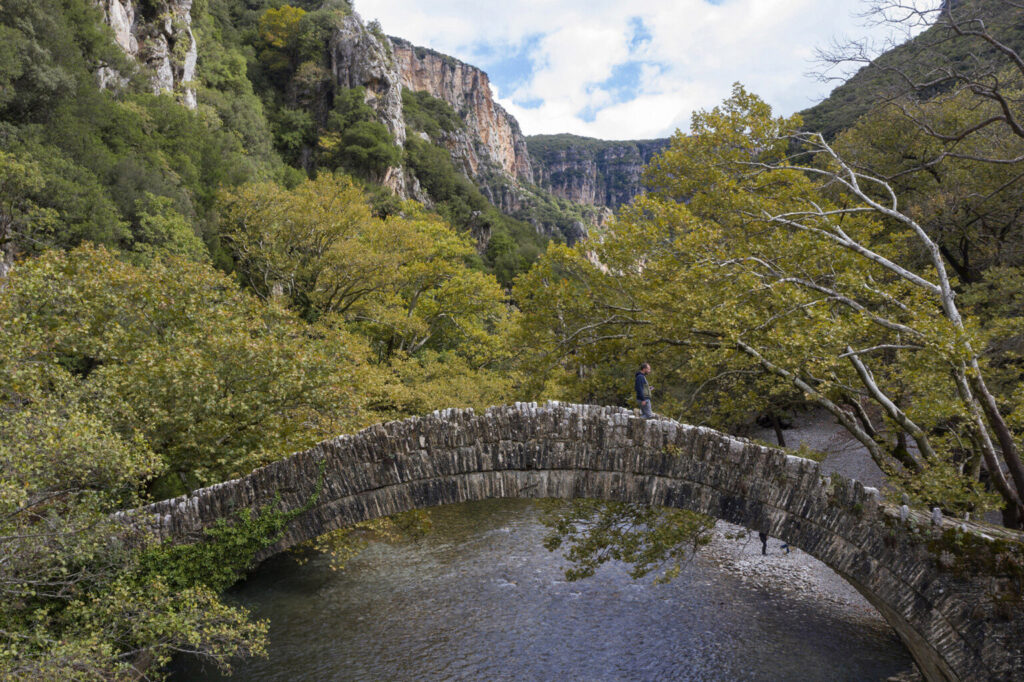
One of the most famous villages of Zagori, called Zagorohoria, is Mikro Papigo. It is surrounded by magnificent nature and has preserved its traditional architecture almost entirely, with grey stone walls and slate roofs. Its paths are also paved with the same grey stone. Even the road to the village, despite its twists and turns, is beautiful. Other villages of Zagori are listed below.
Ganadio
Ganadio is a small village in the municipality of Konitsa. It is designated as a traditional settlement and is nestled in lush greenery at an altitude of 890 meters. As you ascend the winding road to the village, plane trees, oaks, and maples accompany you.
Molista
The architecture of Molista is characterized by buildings with simple, austere lines, mainly fortress-like structures with few openings, thick walls, and sturdy wooden beams. Decorative elements are limited to stone arches. Here, you’ll enjoy the unique tranquillity of the landscape and its breathtaking beauty, as the village is surrounded by dense forest.
Dotsiko
The village is divided by the Dotsikiotis River, a tributary of the Venetikos, which is bridged by a magnificent single-arched stone bridge likely built in the 19th century. The heart of the village beats in the small square with the large plane tree overlooking the bridge, where you can learn everything about local life.
Milies
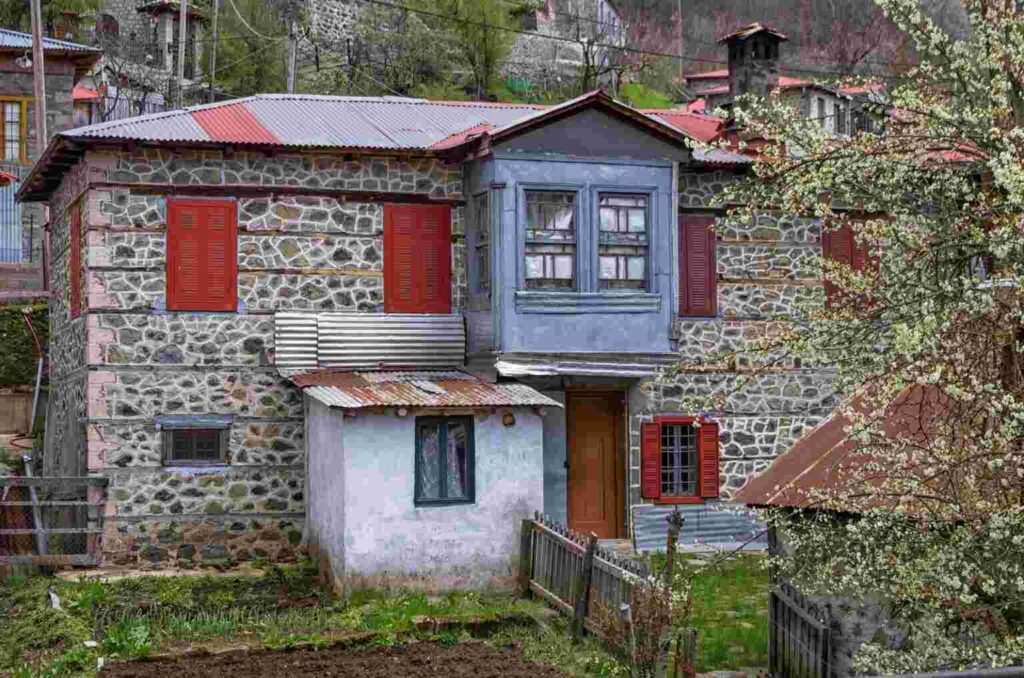
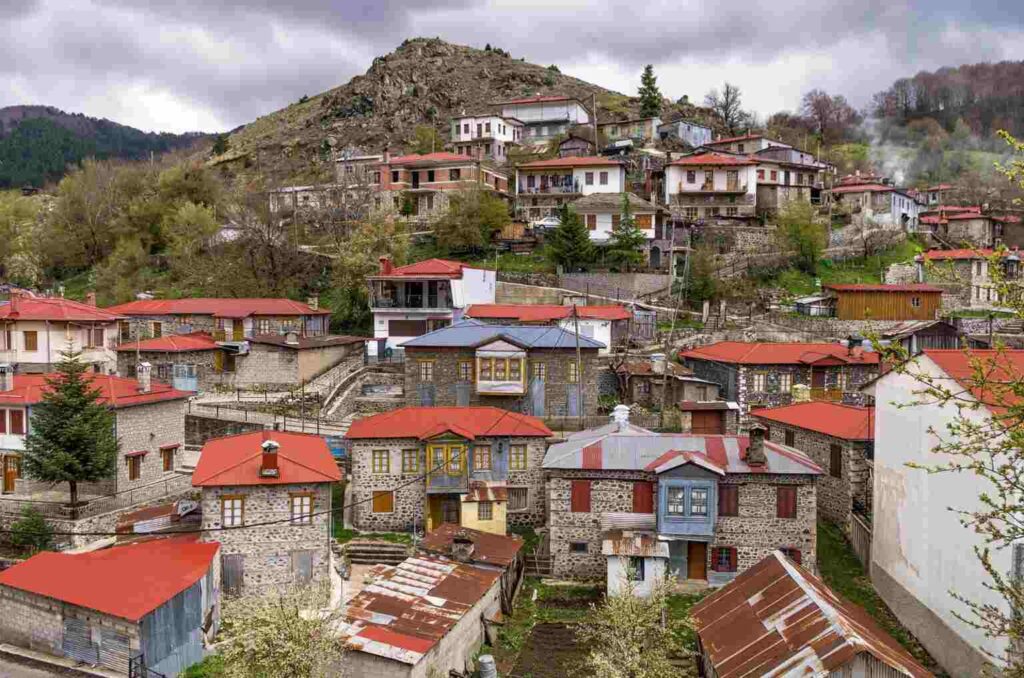
Milies is one of Ioannina’s villages, near the artificial Aoos Lake and Metsovo. It is at an altitude of 1,160 meters and is surrounded by dense greenery. Its main attraction is the Bear House, a glass pavilion that houses a taxidermied bear found injured in the early 1990s by a local who tried unsuccessfully to save it.
Dilofo
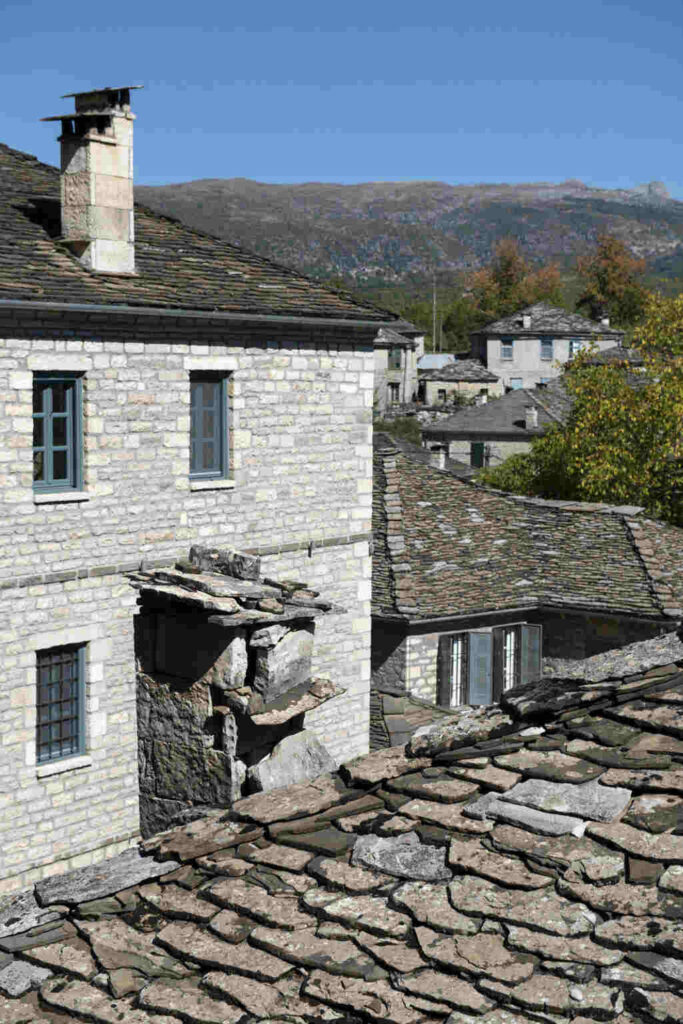
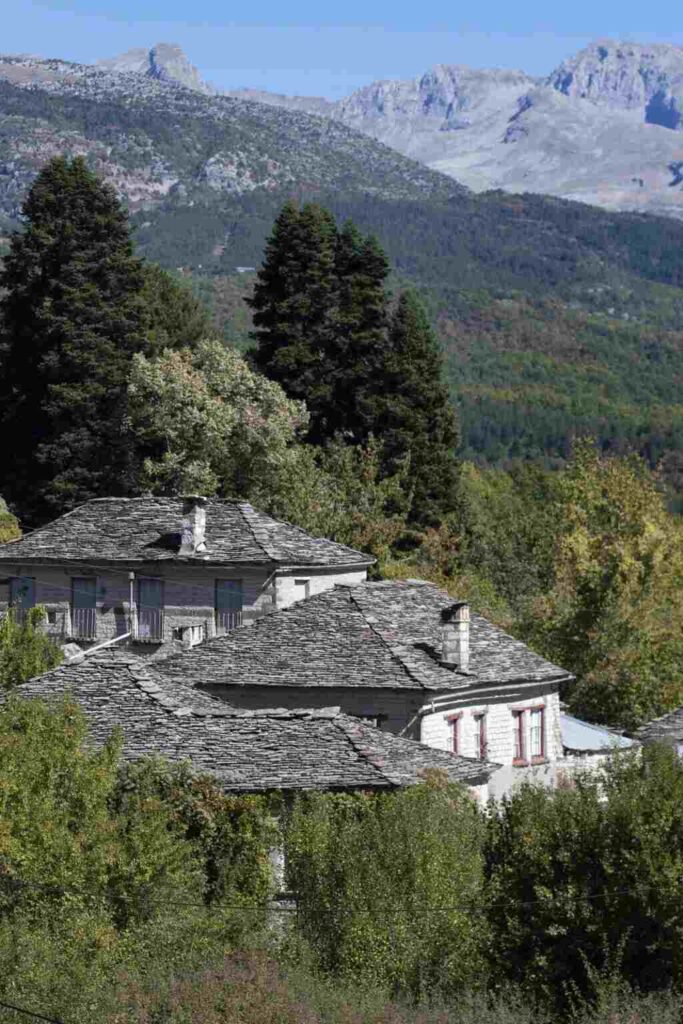
Each activity in the Pindus mountain range offers a unique perspective on its beauty.
Located at an altitude of 900 meters, Dilofo is surrounded by enchanting nature. It is a designated traditional settlement with no cars allowed in the village. You can wander through its cobblestone alleys, admiring the stunning traditional Epirus architecture and nature. The houses are built from stone, slightly lighter than the dark grey of Papigo, and equally beautiful whether they are two-story mansions or humbler, single-story homes crafted with care. With its ancient plane tree, the village square is the meeting point for visitors and locals, as is the Church of the Dormition of the Virgin, built in 1850. Enjoying the tranquillity of the Pindus mountain range is an experience like no other.
Kipoi
The Pindus mountain range’s charm can be felt in every corner of its landscape.
The village is named after the flower-filled gardens of the houses. A total of cobbled streets lead to old fountains and stone-built houses with doors painted in various colours (yellow, sea blue, red, and green), offering scenic views that resemble a painting. A village landmark is the tall bell tower with a clock in the Church of St. Nicholas, known for its beautiful architecture. Nearby, you can visit some of the most beautiful bridges of Epirus, like the Kontodimos or Lazaridis Bridge from 1764, the Kokkori Bridge from 1750, and the three-arched Kalogeriko Bridge from 1748.
Tsepelovo
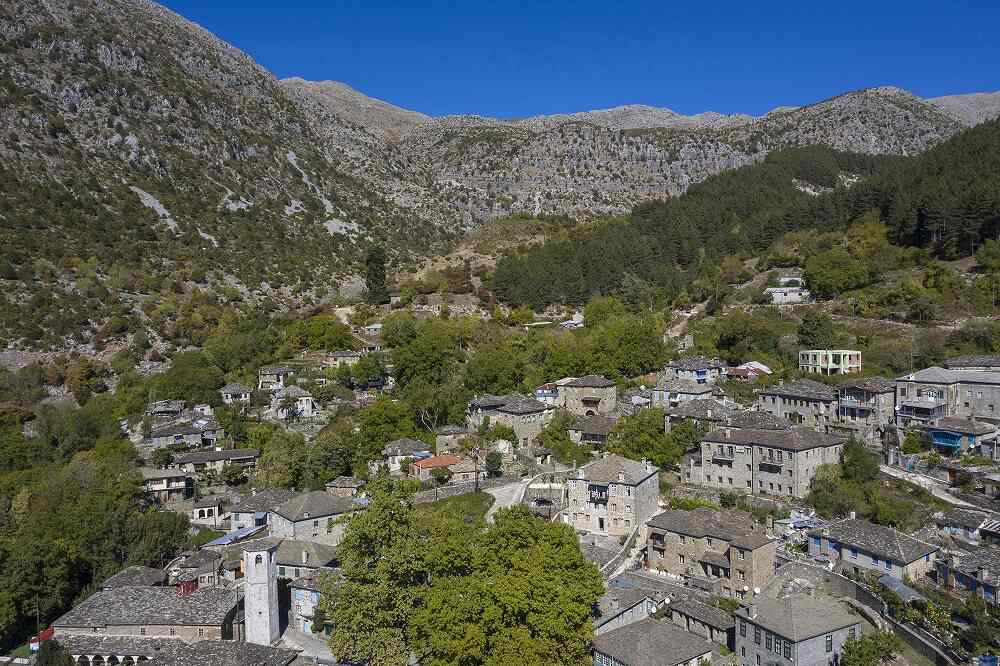
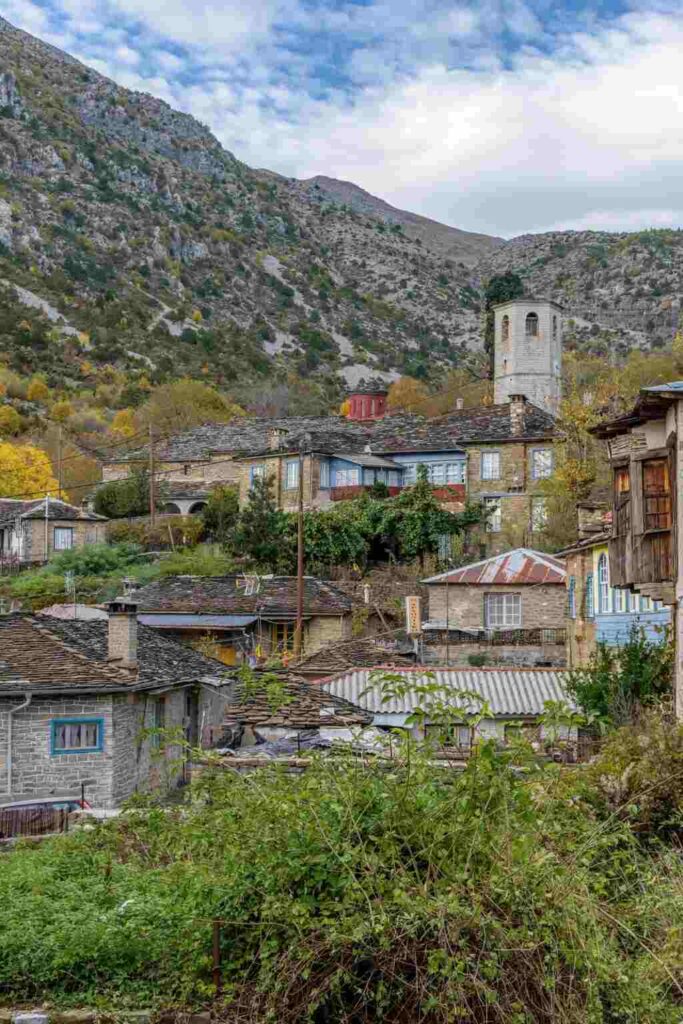
Tsepelovo is also part of Zagori, though slightly more remote than the other villages in the area. It was the administrative centre of Zagori in the 18th century and experienced commercial prosperity during the Ottoman era, mainly due to the timber trade. Like all villages in the area, Tsepelovo is filled with stone buildings featuring beautiful entrances, some with balconies, and many doors and windows painted in shades of blue that soften the austerity of the stone. Strolling through its stone-paved streets reveals all its beauty, including the lush landscape and unique Zagorian architecture. The square is dominated by an ancient plane tree and the 18th-century Church of St. Nicholas, a three-aisled basilica with a dome painted in 1786 by iconographers from Kapesovo.
Kapesovo
Kapesovo is a small village, yet it is beautiful. Located at an altitude of 1,100 meters, it has the Mezaria Gorge to the north and the Vikos Gorge to the west, which lend the landscape a wild beauty. Walking along its cobblestone paths, often covered with lush green grass, you’ll admire the well-kept houses with charming doors, colourful flowers, and various other buildings.
Ano Pedina
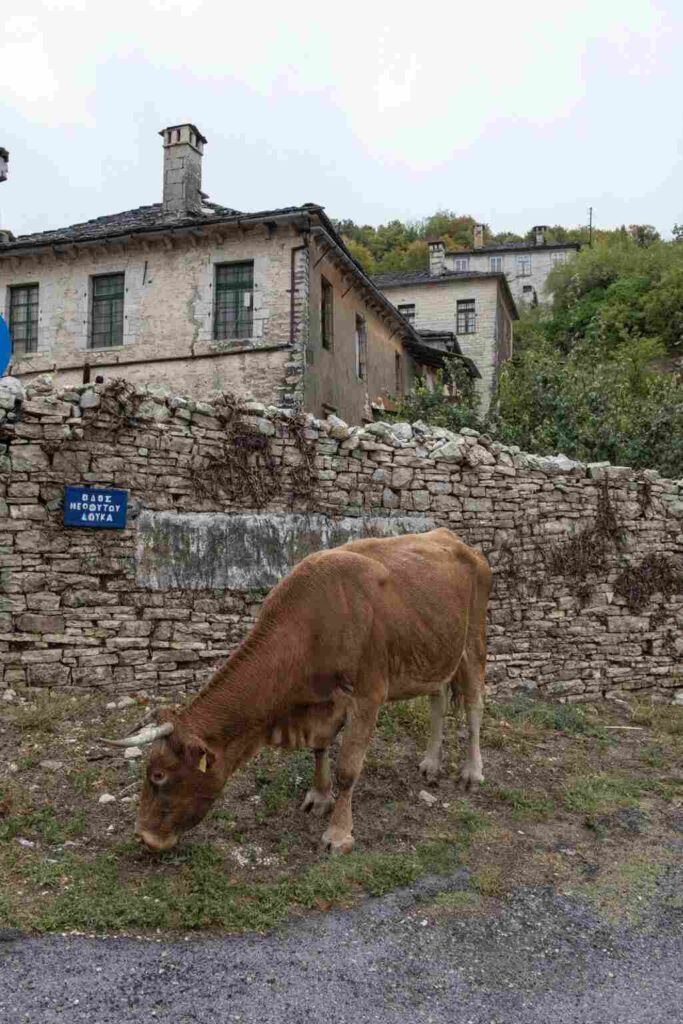
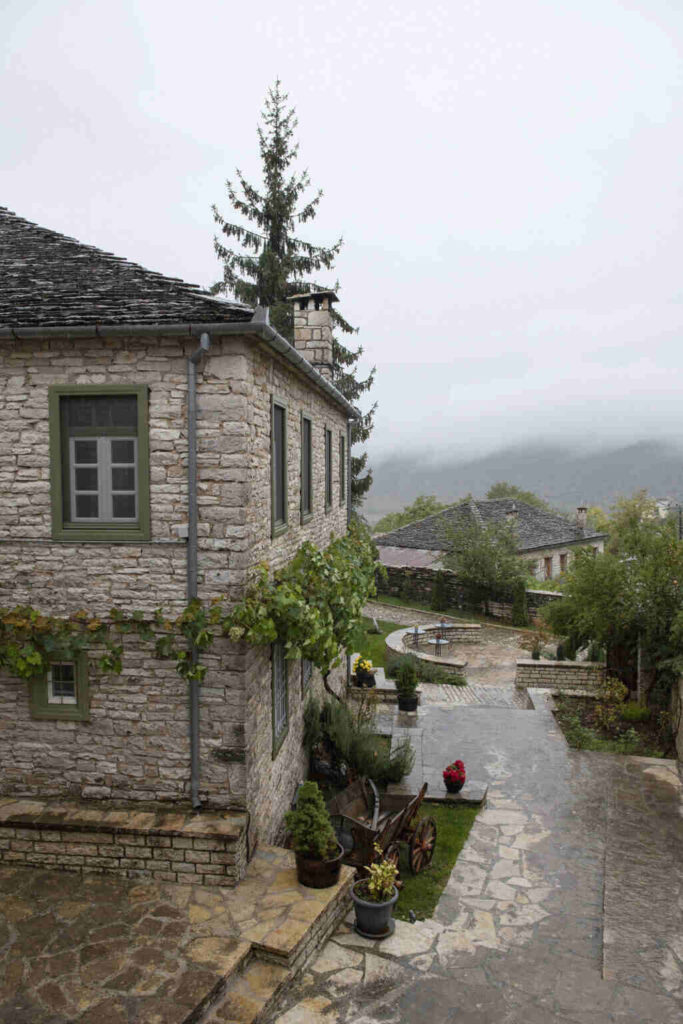
In southwestern Tymfi, in Central Zagori, between Elafotopos and Monodendri, lies Ano Pedina. It is a beautiful and more orderly village than Kipoi, built with the same off-white stone as Dilofo. At the village entrance, the Monastery of Evangelistria, with its fortress-like structure and church dating to 1793, welcomes you, creating a scenic setting with well-maintained stone mansions. It is a well-organised village with charming guesthouses and traditional taverns, making it an excellent base to explore the surrounding area.

